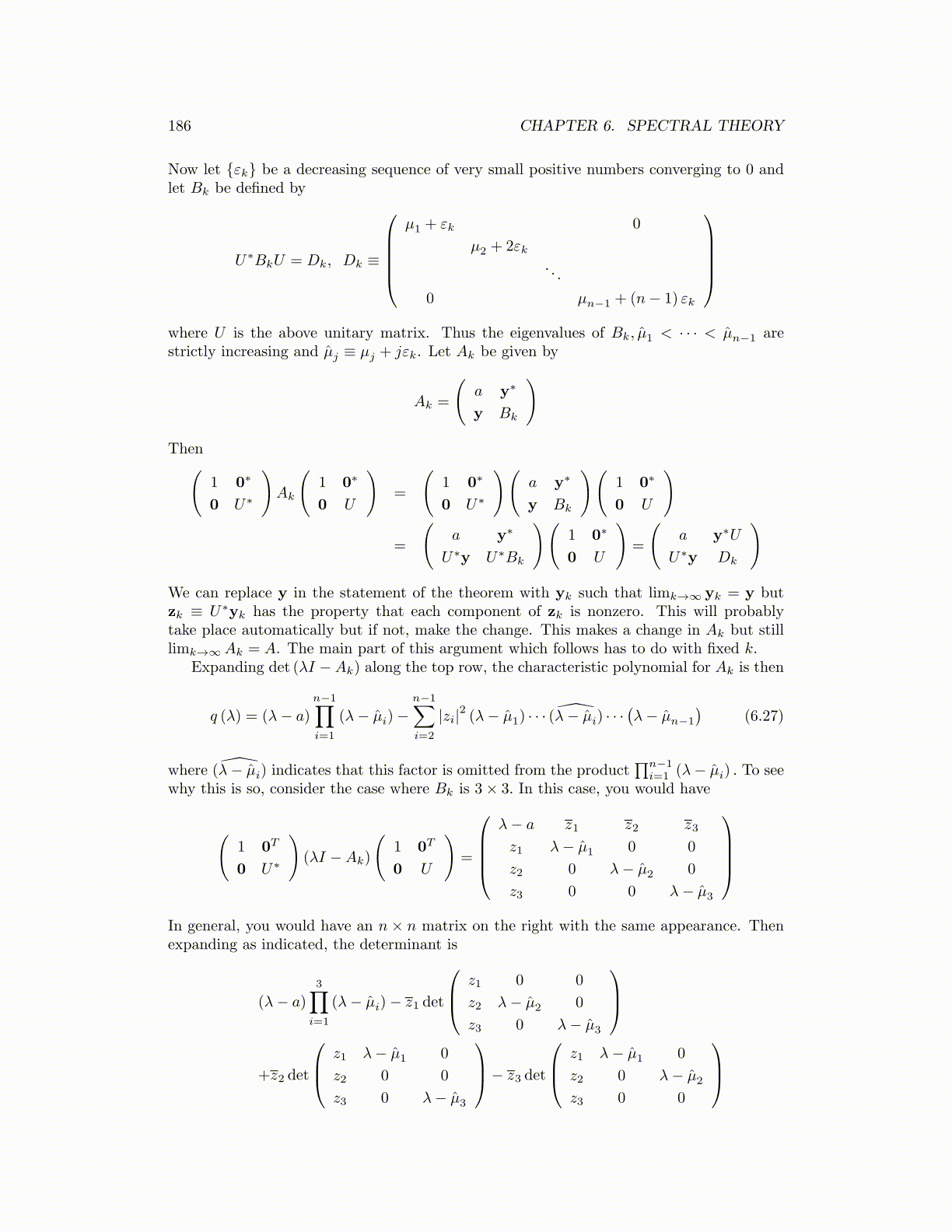
186 CHAPTER 6. SPECTRAL THEORY
Now let {εk} be a decreasing sequence of very small positive numbers converging to 0 andlet Bk be defined by
U∗BkU = Dk, Dk ≡
µ1 + εk 0
µ2 + 2εk. . .
0 µn−1 + (n− 1) εk
where U is the above unitary matrix. Thus the eigenvalues of Bk, µ̂1 < · · · < µ̂n−1 arestrictly increasing and µ̂j ≡ µj + jεk. Let Ak be given by
Ak =
(a y∗
y Bk
)
Then(1 0∗
0 U∗
)Ak
(1 0∗
0 U
)=
(1 0∗
0 U∗
)(a y∗
y Bk
)(1 0∗
0 U
)
=
(a y∗
U∗y U∗Bk
)(1 0∗
0 U
)=
(a y∗U
U∗y Dk
)
We can replace y in the statement of the theorem with yk such that limk→∞ yk = y butzk ≡ U∗yk has the property that each component of zk is nonzero. This will probablytake place automatically but if not, make the change. This makes a change in Ak but stilllimk→∞Ak = A. The main part of this argument which follows has to do with fixed k.
Expanding det (λI −Ak) along the top row, the characteristic polynomial for Ak is then
q (λ) = (λ− a)
n−1∏i=1
(λ− µ̂i)−n−1∑i=2
|zi|2 (λ− µ̂1) · · · ̂(λ− µ̂i) · · ·(λ− µ̂n−1
)(6.27)
where ̂(λ− µ̂i) indicates that this factor is omitted from the product∏n−1
i=1 (λ− µ̂i) . To seewhy this is so, consider the case where Bk is 3× 3. In this case, you would have
(1 0T
0 U∗
)(λI −Ak)
(1 0T
0 U
)=
λ− a z1 z2 z3
z1 λ− µ̂1 0 0
z2 0 λ− µ̂2 0
z3 0 0 λ− µ̂3
In general, you would have an n× n matrix on the right with the same appearance. Thenexpanding as indicated, the determinant is
(λ− a)
3∏i=1
(λ− µ̂i)− z1 det
z1 0 0
z2 λ− µ̂2 0
z3 0 λ− µ̂3
+z2 det
z1 λ− µ̂1 0
z2 0 0
z3 0 λ− µ̂3
− z3 det
z1 λ− µ̂1 0
z2 0 λ− µ̂2
z3 0 0